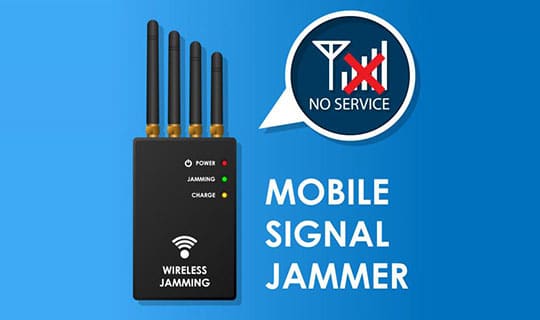How Common is GPS Jamming? (And How to Protect Yourself)
The incident occurred at the Newark Airport after FAAThe Federal Aviation Administration is the regulatory transportation agency in the Unites States responsible for regulating all aspects of civil aviation in the US. and NJ Port Authority officials struggled for over two years to determine why the new ground-based augmentation system (GBAS) – a system used primarily for augmenting aircraft take-off and landing systems – was experiencing intermittent failures. The cause of these failures seemed impossible to identify.
Eventually, with help from the FCC and with specialized equipment, they were finally able to identify the cause of these inexplicable problems: A contractor on site was using a GPS jammer that not only blocked his company vehicle’s fleet tracking system, it also took down the GBAS in the process.
GPS jammers are usually small devices that plug into a vehicle’s lighter port and emit radio signals that overpower or drown out much weaker signals such as GPS or others. Although GPS jammers are illegal in the US, they are easily available online and are becoming more and more common as the use of fleet management tracking systems increases. These devices may seem relatively harmless at first glance, but their potential to cause harm is significant.
The case of the jammer at the Newark Airport is a perfect example. A simple $30 device was able to take down a state-of-the-art, highly sophisticated landing system at one of the busiest airports in the world. Worse, the device user wasn’t even trying to do so. Imagine what a person who DID intend to do harm could do?
Remember, GPS is used for much more than just navigation. It’s also the primary source of timing and synchronization in critical infrastructures such as financial, communications, industrial, the power grid, and more. In fact, these infrastructures are so critically reliant upon GPS for timing and synchronization that over the past several years, the Department of Homeland Security has begun an initiative to raise awareness of the threat and find solutions to safeguard these vital systems.
In timing applications, jammers can disrupt the GPS signal, causing the underlying systems to lose their ability to synchronize their internal clocks and, in turn, their ability to stay in sync with the rest of the network. Since many critical infrastructures sectors require synchronization across their network to be within millionths of a second, even short-term GPS outages can have a major impact. Worse, when an outage occurs, there’s typically nothing to indicate that it’s a result of jamming. The GPS signal simply is not received anymore.
To make matters even more dire, many of the datacenters that house the servers these networks run on are in warehousing districts (with trucks coming and going frequently) or near major highways. These are two of the most likely places to encounter GPS jammers. In fact, at Orolia we know from experience and real-life examples that it not only happens … it’s relatively common.
It was with these threats in mind that Orolia has developed solutions to protect our customers. Late last year, we announced the release of BroadShield, which uses sophisticated algorithms to interrogate the RF signal being consumed by GPS receivers to detect anomalies such jamming or spoofing. And recently, we released a new anti-jamming (AJ) antenna.
The new AJ antenna attenuates, or blocks, RF signals that come from near the horizon. True signals come from the satellites near the zenith. False interfering ones typically come from the horizon.
A good way to visualize how it works is to stand with your arms straight out to either side, parallel with the floor, and then raise them up to create a 30-degree angle from the floor. If you were a GPS antenna on the roof of a datacenter, any RF signal coming from below your arms would be blocked. Since the most common source of jamming comes from people trying to evade fleet management tracking systems – in cars or trucks, or on the ground – the AJ antenna is a very effective method of protecting critical networks.
The AJ antenna is also a drop-in replacement for traditional GPS antennas, making it easy to deploy. It requires no special power, mounting, or placement considerations beyond what a standard antenna needs. We’ve had a chance to test this with some customers who were experiencing GPS outages due to jamming and have recorded some remarkable results. We’ll share those next time in a blog by John Fischer. Stay tuned for more.
High gain (40 dB) GNSSGlobal navigation satellite system (GNSS): A general term describing any satellite constellation that provides positioning, navigation, and timing (PNT) services on a global or regional basis. See also outdoor antenna.
Protect your critical infrastructure from vulnerabilities caused by jamming and spoofing.


